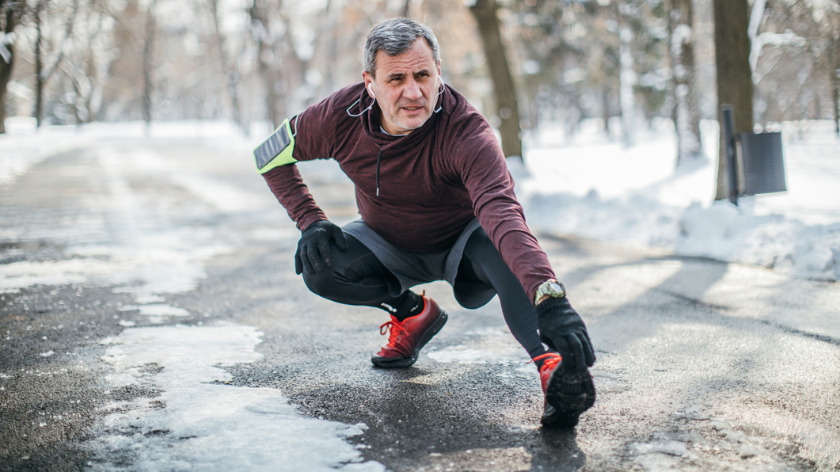It can be challenging to stay active in the winter due to shorter daylight hours and colder temperatures – but don’t let the cold and snowy weather block your fitness routine! Being active outdoors during the winter offers plenty of mental and physical health benefits, including fresh air, being in nature, Vitamin D and improved mood. Here are a few ways to help you put the WIN in winter workouts:
Consider the environment
Check the forecast before venturing outside. Doing so will give you a sense of current temperature conditions, windchill and anticipated precipitation to help plan your activity and time duration accordingly.
Learn to layer
Figuring out the appropriate gear takes a bit of trial and error depending on how intense your training session will be. Add extra loose-fitting layers that you can easily take off as heat is generated throughout your training session.
Cover up your extremities
Your head, ears, face, hands and feet tend to feel the cold the fastest, as your blood flow is concentrated toward your body’s core. Keep them covered with gloves, thicker socks and a hat or headband. Pro tip: slip hand warmers into your gloves for extra warmth!
Be bright and choose the right gear
If you tend to exercise early in the morning or at the end of the day when it is dark, consider using a headlight or reflective clothing so you are easily seen. Always wear protective headgear if you are cycling or are on the slopes snowboarding or skiing. When conditions get snowy and icy, consider adding spikes to your running shoes to prevent slips and falls. The best safety precaution you can take is to have a workout partner alongside you. If you will be training solo, message your plans or location to a family member or friend.
Optimally fuel
Have a pre-workout snack and stay adequately hydrated throughout your workout. Even in colder temperatures, it is still possible to become dehydrated, so remember to drink water.
Warm up indoors
Before spending time outside in colder temperatures, elevate your heart rate with dynamic stretching indoors to prepare your muscles for movement and prevent injury.
Listen to your body
Be willing to adjust your workout plans in unsafe weather conditions and familiarize yourself with the symptoms of mild, moderate and severe frostbite and hypothermia. Remember – safety first!






